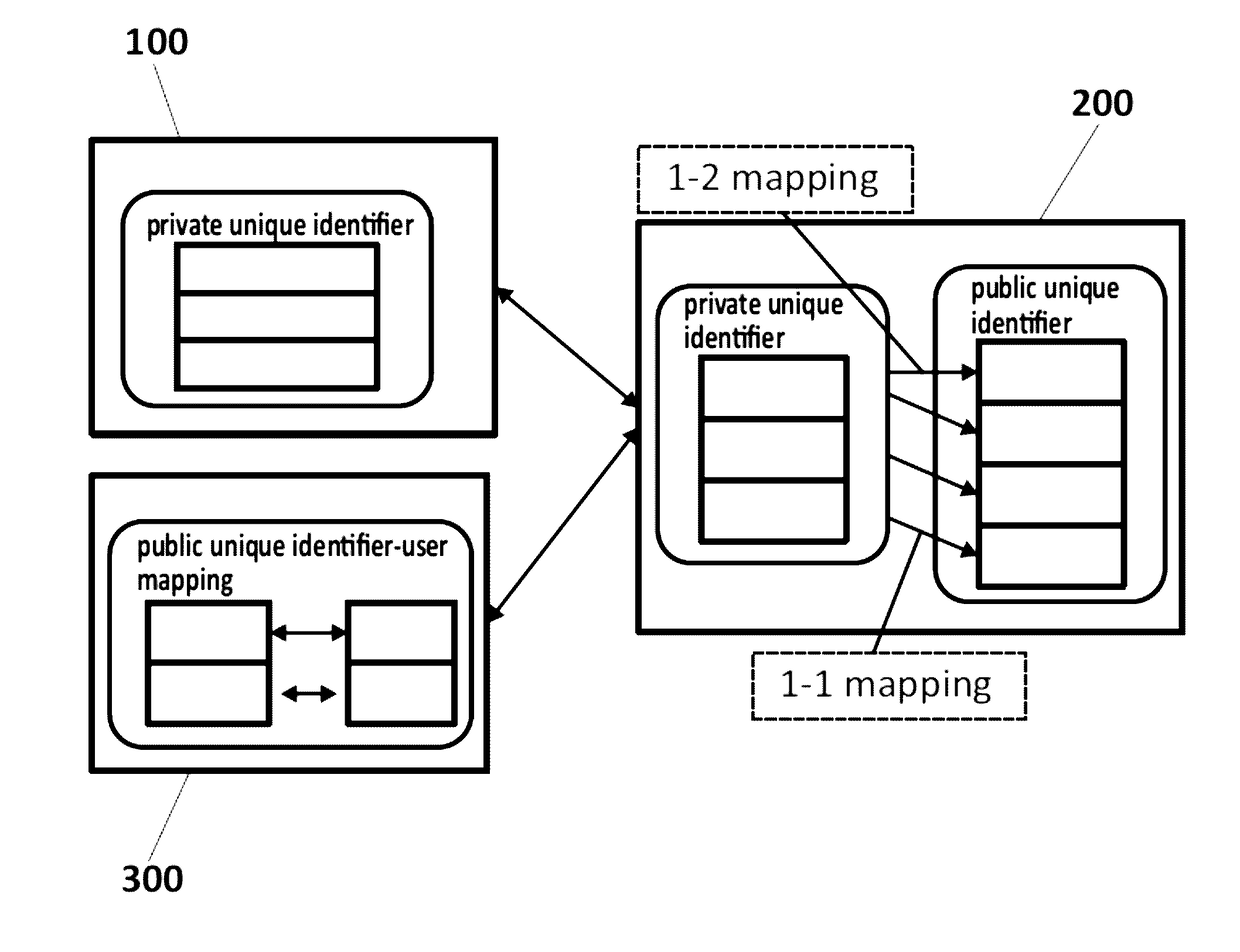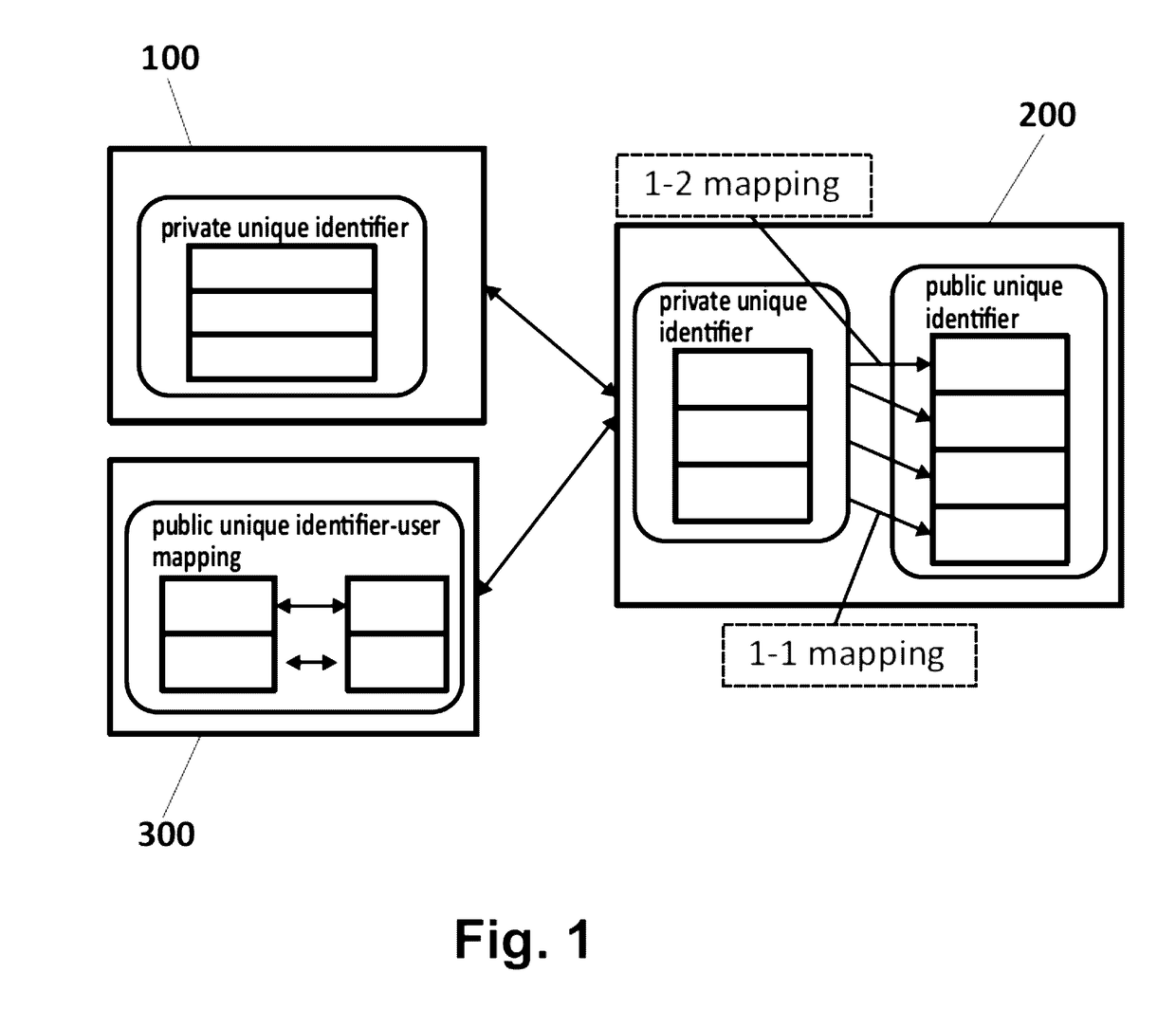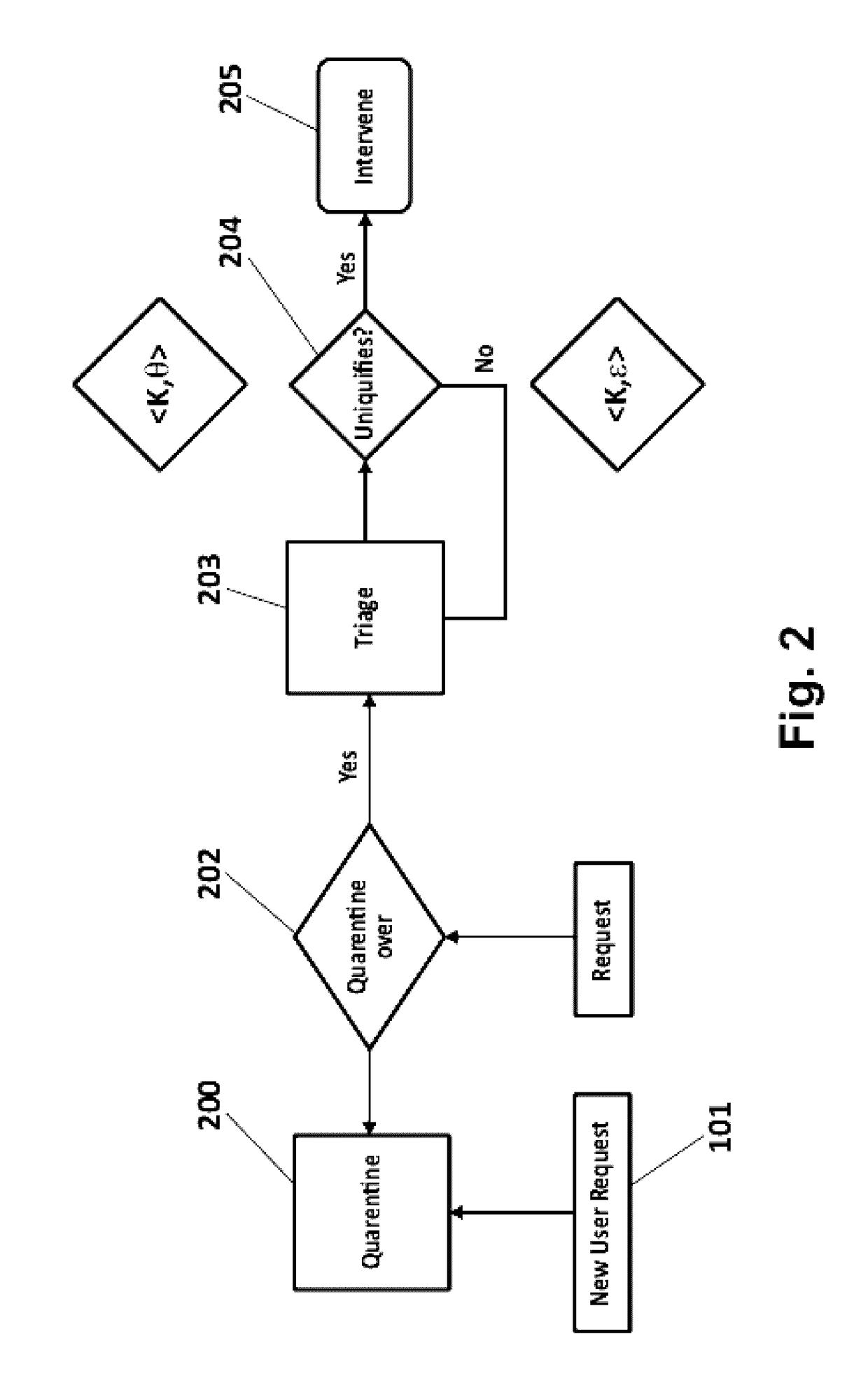Method, a device and computer program products for protecting privacy of users from web-trackers
a technology of web-trackers and computer programs, applied in the field of internet security, can solve the problems of serious threat to one's privacy, hurting web-service revenue streams, raising privacy concerns, etc., and achieve the effect of protecting user privacy
- Summary
- Abstract
- Description
- Claims
- Application Information
AI Technical Summary
Benefits of technology
Problems solved by technology
Method used
Image
Examples
first embodiment
[0043] the configured intervention policy comprises a unique identifier dropping intervention that simply refuses to return the public unique identifier associated with the user 100 to the web-tracker. In essence, this results in a particular request being associated with a “new” user instead of the profile of the user himself. The decision to drop a unique identifier is made by calculating the ranking of the current web history as it has been allowed to leak against the web-behavioral profile collected during the quarantine phase 201.
[0044]If a request causes the rank to drop, the request is allowed to pass, while in the opposite case, the tracking unique identifiers associated with this request are dropped. Rarely a single request can affect the ranking, so in the case where a request does not affect the ranking the Δ(θ(sig, u′), θ(sig, u)) is calculated. If it is negative, therefore driving the user 100 away from his web-behavioral profile, the unique identifier is allowed to pas...
second embodiment
[0045] the configured intervention policy, or history padding intervention, comprises, as web-requests arrive, and if the current web history of the user 100 is determined to be ranked below said K threshold, searching through the history of the Kth ranked user for a request that, when added to user's browsing history minimizes the function:
Δ(θ(sig,u′),θ(sig,u))−Δ(θ(u′,v),θ(u,v))
where u′ is the user's history with the addition of the candidate web-request (URL) from v's history and Δ is the (signed) difference between two similarity scores.
[0046]FIG. 3 drafts a high level view of this configured intervention policy of said second embodiment. The core idea is to choose the optimal intervention that increases the distance of the user 100 from their web-behavioral profile while simultaneously decreasing the distance between the user 100 and Kth ranked user from the web-behavioral profile. Eventually, this push-and-pull mechanism results in the user's 100 re-identification rank increasi...
third embodiment
[0048] the configured intervention policy comprises triggering a pseudonym to be created for the user 100 such that there is now an additional profile associated with the user 100. This is accomplished by creating a one-to-many mapping of unique identifiers from the user's “real” identity to each pseudonym. The proposed device 200 will then balance requests using the multiple pseudonyms to ensure privacy is preserved.
PUM
 Login to View More
Login to View More Abstract
Description
Claims
Application Information
 Login to View More
Login to View More - R&D
- Intellectual Property
- Life Sciences
- Materials
- Tech Scout
- Unparalleled Data Quality
- Higher Quality Content
- 60% Fewer Hallucinations
Browse by: Latest US Patents, China's latest patents, Technical Efficacy Thesaurus, Application Domain, Technology Topic, Popular Technical Reports.
© 2025 PatSnap. All rights reserved.Legal|Privacy policy|Modern Slavery Act Transparency Statement|Sitemap|About US| Contact US: help@patsnap.com



